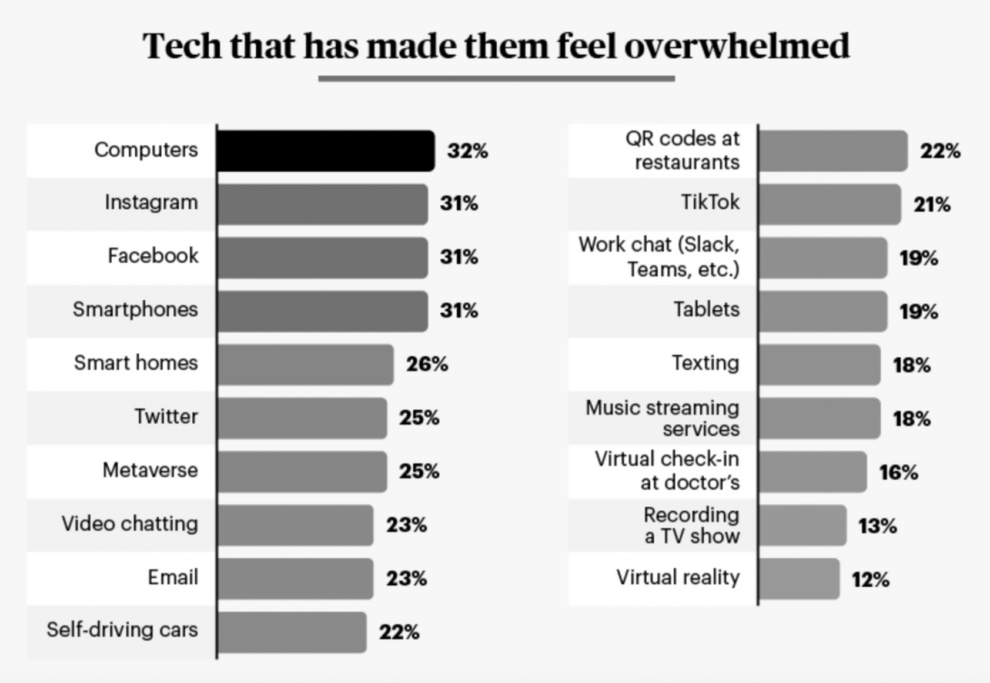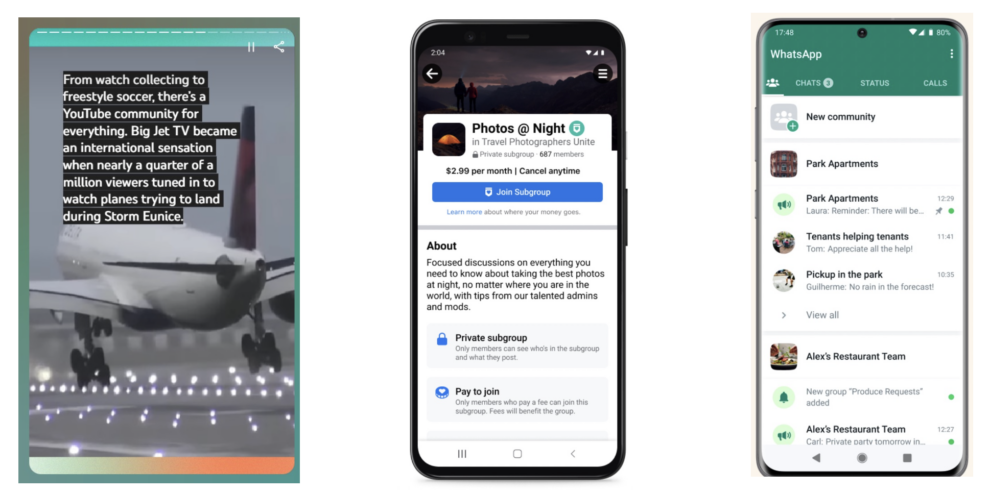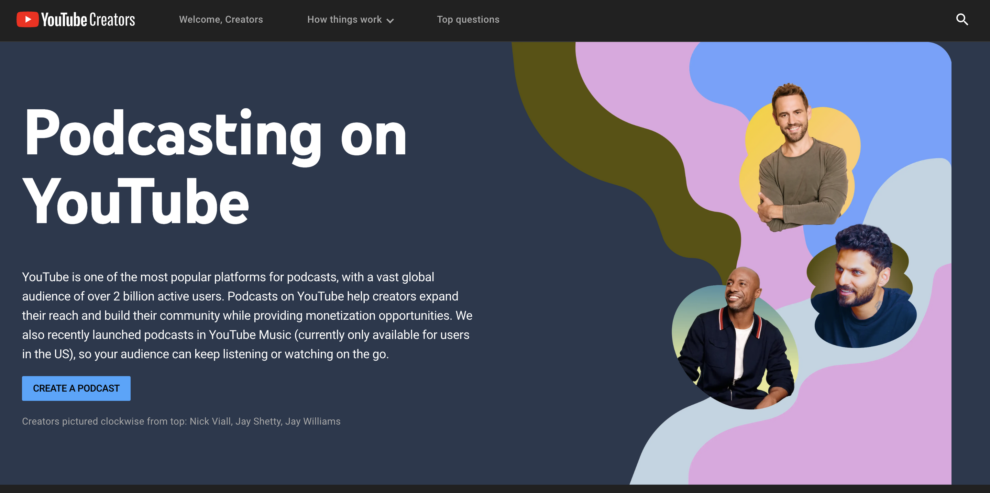Blog
8 facts about the Future of News from Ezra Eeman’s Wayfinder report

Continuing the Future of News blog series, we explore Ezra Eeman’s Wayfinder report. Ezra’s weekly newsletter is taking a short summer break, so we thought it was the perfect time to deep dive into his work.
Ezra will speak at the upcoming Digital Growth Summit event in Brussels on September 26th and tickets are still available here.
Without further ado, we’ll begin our summary with the same quote that kicks off the Wayfinder report:
For media the future is no longer about digital transformation but about the transformation of digital
Ezra Eeman
1. By 2030 total annual spending power by people aged 60 and over in Europe is expected to increase 39% to almost 5 trillion
Since older people tend to have both high incomes compared to younger cohorts (especially in OECD countries, thanks to old-age pensions) and high needs (if only on account of medical and specialised care), they are major consumers.
The senior population is experiencing rapid growth, with 750 million seniors worldwide, projected to surpass 1 billion by 2030. They are becoming increasingly significant players in the economy, with their role expected to expand further in the 2020s.
Despite possessing a strong computer knowledge foundation, the swift technological advancements overwhelm nearly 91% of Gen X’s and Baby Boomers. Computers, social media, and smartphones tend to cause the most frustration and confusion for them.

And as people grow older, physiological and cognitive changes become inevitable. Thus designers must understand these changes to master interface design for older target audiences.
2. The generation that grew up together with the iPhone turns 16

The first truly mobile and social generation is coming of age. And they are redefining media through self-expression, community-building, and mobile technology.
A growing generational gap was revealed in a study of media consumption patterns. Younger audiences are shifting away from linear radio and TV, and instead spending more time on social media. Meanwhile, data indicates that the youngest generation, known as social natives, primarily engage with platforms like Instagram, TikTok, and Snapchat. This shows a clear preference for app-based content consumption over direct visits to news websites.
Mobile phones and video apps play a pivotal role in shaping media experiences, catering to highly engaged and short moments, as well as longer binge-watching sessions. This shift goes beyond traditional social media giants, as smaller, community-based apps gain popularity due to their direct and private nature.
Efforts toward fostering engagement and discussion amongst audiences can be rewarding.

Emphasising the power of communities, platforms now offer subscription models to enhance communal experiences and interactions, fostering a sense of belonging among users.
3. 19% of teens (13-17 years old) in the US visit YouTube almost constantly. 16% are locked in TikTok

A study by Pew Research Center revealed 35% of teens in the US aged 13 to 17 are virtually constant users of either YouTube or TikTok.
These platforms together with their auto-play features, have become major sources of entertainment and content consumption for this tech-savvy generation. The findings underscore the significant shift in media consumption patterns among teens, who now find themselves drawn to the endless stream of videos and content curated by these platforms.
4. 81% of weekly listeners believe that podcasts alleviate the stresses of everyday life
Research showed that podcasts are valued by listeners as spaces of tolerance and trust, unlike the perception of social media, which is often seen as a source of misinformation and information overload.
The flexibility of audio content allows listeners to engage with podcasts and streaming music during various unserved moments throughout the day. This makes podcasts an attractive option for publishers seeking to capture attention amidst increasing competition.
Podcast listeners are highly sought after by brands due to their demographic characteristics—young, urban, ultra-connected, media enthusiasts, and highly educated. Despite this, there is still significant untapped potential for growth.
🤔 53% of non-listeners in France admit they either don’t know what a podcast is or haven’t considered using it.
Real-time audio briefs are emerging as a new trend, exemplified by Insider’s ‘The Refresh’, offering updated, on-demand news in a podcast format, created by seamlessly stitching together individually produced live audio segments.
Moreover, the growing interest in video podcasts has propelled YouTube to surpass Spotify as the preferred platform for weekly podcast listeners, while heavy listeners continue to favour Apple Podcasts.

💡 YouTube has capitalised on this popularity by launching a dedicated podcast page.
5. Media will evolve inevitably to its most natural and immersive form. Not flat and immobile, but rather always on, lifelike and immersive.
The potential of VR and AR for storytelling is promising, but it is still quite complex to create and consume, in comparison to social media platform like TikTok.
This explains the early ‘Betaverse’ experiencing a decline in users; platforms like Decentraland, The Sandbox, and Horizon Worlds encounter challenges with daily active users and user engagement.
Technology expert Matthew Ball identifies elements that define the Metaverse, already present in various forms, but lacking a unified, connected, and continuous environment. There are certainly efforts put forth to bring the Metaverse into a more accepted ‘reality’, however the optimism of tech companies are not yet met by the market.

6. Everything that can be automated will be automated
AI could decouple digital news production from print creation, streamlining daily output and allowing for more creative content catering to online audiences.
The creative AI tool landscape is expanding exponentially, capable of generating stories, images, videos, voices, with improving output quality, pressuring specific tasks and roles within media companies.
A famous example is ChatGPT, a large language model AI-tool, which engages in natural conversations and produces convincing textual output, albeit sometimes factually incorrect.
Moreover, AI-tools can extract various formats from news articles, even from behind paywalls. This certainly poses challenges for publishers as AI startups offer remixes and generate content based on original reporting.
With media companies adopting these technologies, ethical discussions are more critical than ever. We talked more about this in our previous blog post here.
7. Digital has blurred the lines between media – video, audio, test – it’s all bits and bytes and it’s all going through the same pipeline
The renowned long tail of the internet has evolved into an expansive pipeline that encompasses a wide range of mainstream and niche content. The convergence of diverse perspectives and individual creators presents opportunities for new media companies.
Organisations like The Every have embraced collective bundling, offering financial incentives to writers contributing to their podcasts and newsletters since 2020.
The New York Times leverages growing demand and willingness to pay for a connected portfolio of complementary products.
Brands are also catering to their most loyal users, offering additional proposals to these superusers who willingly spend money or attention. These high-value customers serve as a buffer during challenging times, ensuring stability and resilience for the future.

8. Rather than storing data centrally, users would hold their personal data in a personal data pod

Research highlights widespread concerns about data collection and personal privacy when using browsers and search engines. Despite these apprehensions, many users still fail to take action to address privacy concerns effectively.
Playing the privacy card is a major game changer for the digital economy.
The advancements in AI technology enable it to comprehend the digital landscape in a human-like manner. This creates new possibilities for understanding user behaviour, preferences, and needs while respecting their privacy. Moreover, the value of first-party data as an exclusive and owned resource cannot be underestimated. However, this data often passes over publishers’ platforms without being captured.
Publishers are raising concerns about ad-tech firms using their content to create contextual advertising segments without permission, leading to disputes over contracts and trust issues in the programmatic advertising space. As third-party cookies phase out, and contextual advertising gains traction, publishers seek a more significant role in shaping industry practices and securing stronger terms. This shift prompts a call for better representation and fair treatment as new technologies emerge.
🍿 More brain snacks from the report:
- AI-driven tools made way for technology such as voice cloning and synthetic text-to-speech, allowing publishers to experiment with new audio formats. However, this technological advancement also brings concerns about third-party piracy.
- Enhancing podcast searchability and accessibility is vital, and rich metadata, powered by speech recognition and NLP engines, offers users different ways to access podcasts.
- There are strides towards expanding commercial translation technology to cover over 20% of the global population that currently does not have this technology. Meta recently announced they are performing a real-time text conversion among 100 languages without using English.
- Gen Z users are embracing avatar customization, with 47% dressing their avatars to express individuality.
- Loneliness is a significant concern for seniors, and startups like Hank and GetSetup address it through interest-based classes and community gatherings.
Other Blog Posts

Stay on top of the game
Subscribe to Twipe’s weekly newsletter to receive industry insights, case studies, and event invitations.
"(Required)" indicates required fields

